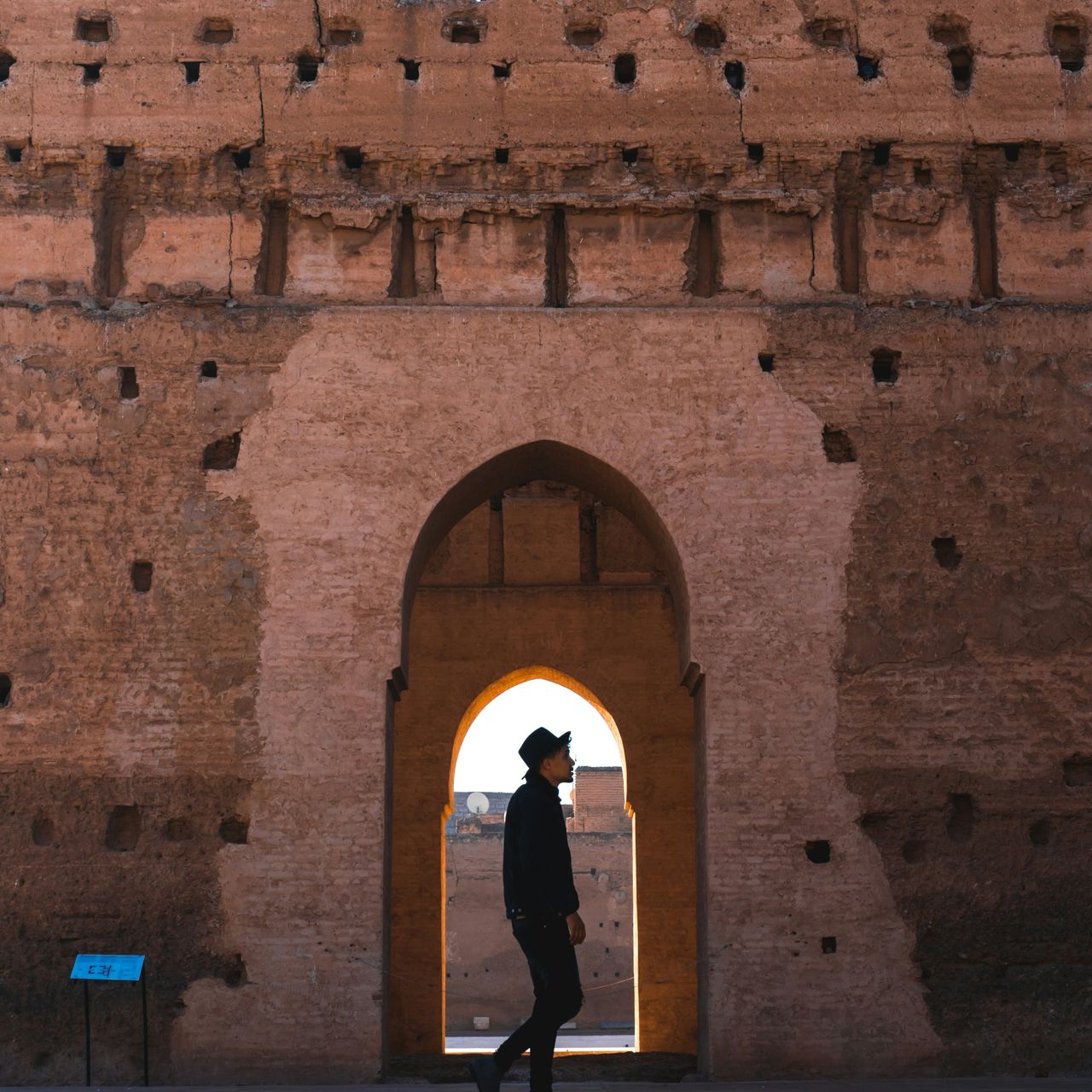Bahia palace: Architectural splendor
Built in the late 19th century, Bahia Palace is a masterpiece of Moroccan architecture. Its interior courtyards, lush gardens, and richly decorated rooms with stucco, zellige tiles, and painted woodwork offer countless photo opportunities. Each room tells a different story, capturing the essence of Moroccan art's refinement.

The medina alleys: Photogenic labyrinth
The narrow, winding alleys of Marrakech's medina are a playground for photographers. The ochre walls, colorful doors, arched passages, and everyday scenes provide unique photo opportunities at every turn. The changing light throughout the day transforms these alleys into ever-evolving backdrops for atmospheric images.

Ben Youssef medersa: Jewel of Islamic art
The Ben Youssef Medersa, a 16th-century masterpiece of Islamic architecture, offers a dazzling visual spectacle. Its walls feature intricate geometric zellige patterns, carved cedar wood doors and ceilings, and a central courtyard with a reflective pool that creates fascinating light effects. Built between 1564 and 1565 by Sultan Abdullah Al-Ghalib, this former Quranic school embodies the height of Moroccan Islamic architectural art.

The palaces: Luxury and sophistication
The palaces of Marrakech are luxurious sanctuaries where every detail is designed for photography. Their lavish gardens, sparkling pools, and interiors decorated with traditional mosaics and carved woodwork offer a perfect blend of Moroccan tradition and modern comfort. The Royal Mansour, for example, comprises 53 individual riads, each an art piece itself.

The souks: Colors and vibrancy
The souks of Marrakech are a festival of colors, smells, and sounds. These traditional markets offer authentic and vibrant scenes of life. Stalls overflowing with colorful spices, intricately patterned carpets, and metal lanterns create rich and varied visual compositions. Each alley in the souks tells a different story, providing endless subjects for photographers.

The riads: Hidden havens of peace
Riads, these traditional houses organized around a central patio, are true architectural gems. Their courtyards adorned with fountains, walls covered in colorful tiles, and terraces offering panoramic views of the medina are all perfect settings for unique snapshots. These havens of peace beautifully contrast with the bustle of the surrounding streets.

The medina shops: Craftsmanship in action
The shops in the medina showcase lively scenes of Moroccan craftsmanship. From weavers to blacksmiths and dyers, each shop is a window into age-old skills. The interplay of light and shadow in these small workshops, the artisans' precise movements, and the colorful products create detailed and emotive photographic compositions.

Dar El Sadaka: A surreal artistic world
Nestled in the heart of Marrakech's Palmeraie, Dar El Sadaka is much more than a luxury guesthouse. It is a living artwork created by artist Jean-François Fourtou. On an 11-hectare estate, visitors are invited into a surreal world where contemporary art blends with luxury and Moroccan tradition. Giant animal sculptures dot the lush gardens, while the "upside-down house" and the "giant's house" play with perceptions. Each suite, named after an animal, offers a unique experience. Dar El Sadaka doesn't just welcome guests; it takes them on a dreamlike journey where creativity rules, making every stay an unforgettable adventure in the artist's imagination.

La Ménara: Reflections and serenity
The gardens of La Ménara, created in the 12th century, provide a peaceful and photogenic setting. The pavilion with its emerald green roof reflecting in a large water basin, set against the backdrop of the Atlas Mountains, creates an iconic visual composition of Marrakech. At sunset, the scene is bathed in magical golden hues, offering opportunities for spectacular shots.

Majorelle garden: Oasis of colors
Created in 1931 by French painter Jacques Majorelle, this garden is a paradise for photographers. Its signature cobalt blue, known as "Majorelle blue," contrasts beautifully with the lush vegetation of cacti, palms, and exotic plants. The fountains, winding paths, and art deco architectural elements offer unique visual compositions around every corner.

